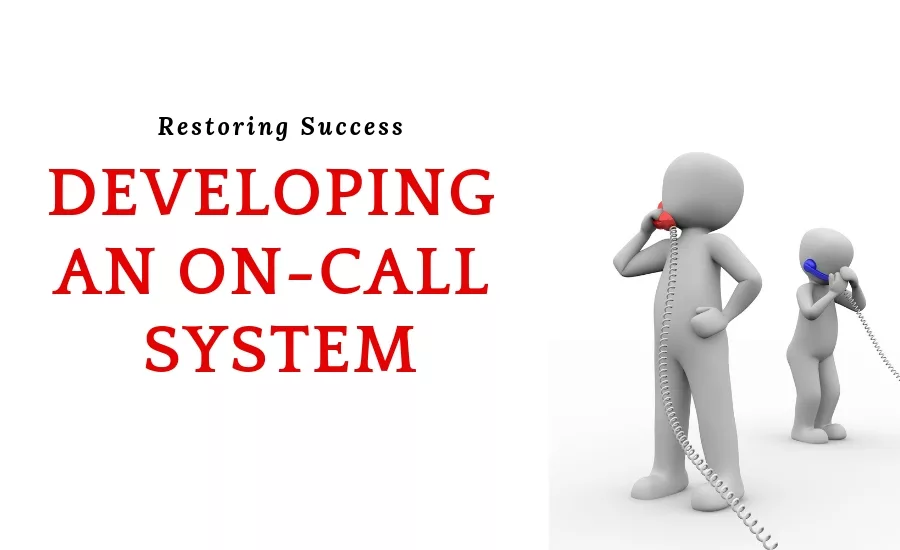Restoring Success: Developing an On-Call System

In restoration, we need to answer the call and be ready to respond and perform any day, any time, 24/7. It’s a critical element of our operations, and at the core of our commitment to those we serve. Restoration is not unique in that there are many industries and different types of positions that have on-call rotations and/or responsibilities that must be carefully managed in the context of delivering the company's goods or services. However, in the restoration industry, we have our own unique considerations and demands including the fact that regardless of position, even when not on call, you are on call to speak to customers or pitch in with after hours logistics.
Although there are many aspects to consider from answering the calls to equipment, one of the most important is our team members, who often work around the clock to help serve others at all hours of the day and night. There are many different on-call schedule designs that accommodate the different shapes, structures, and sizes of restoration companies. There is not a one-size-fits-all plan. The following are some things to consider when designing or reviewing your on-call program:
- Have a documented system and clearly articulates the expectation and requirements: Be very clear at the interview and during on-boarding about the expectations and policies of your company.
-
Culture: Keep it positive. Some love on-call, some do not, some look at it as a part of the job that must be done. Regardless, the team should be engaged and positive about this very important part of our service. It is essentially delivering on one of the most important and fundamental promises we are making to our customers.
- Make sure the team understands the WHY of being on-call and delivering of emergencies services.
- It’s about being there when customers need us.
- The faster we get there, render emergencies services, and protect properties from further damage, the better we can control the total severity of the loss and reduce the potential for secondary damage.
- Helping each other: Foster a culture where team members cover for each other on a child’s birthday, a special holiday, or just help out when volumes are high.
- Leadership: Company leaders should be thankful and empathetic when it is a busy on-call week or when team members worked long shifts. Consider ways to express and show gratitude.
- Make sure the team understands the WHY of being on-call and delivering of emergencies services.
-
Design: On-call design may vary by companies based on services and size. Considerations may include:
- Who gets the initial call?
- Teams: Form on-call teams that have an appropriate mix of skills and trades to accommodate a variety of loss types.
- Schedule: Produce and circulate a schedule so that everyone can plan accordingly. (A one-year schedule allows for everyone to plan around the on-call commitment and communicate conflicts.) The team model allows you to plot out teams without using specific names to accommodate for staffing changes.
- Substitution Process: Have a documented system for substitutions that includes appropriate communication. This allows the team to help each other, give some flexibility, and avoid any breakdowns in the on-call process.
- Communication: Have a defined communication plan regarding how team members are notified of a call or loss and the expectations.
-
Other: Here are some additional tips or consideration:
- Communication channel: Is there an efficient and effective communication channel in place for high volumes or large losses that may require additional help?
- Subcontractors and business partners: During the interview and on-boarding process, ask them if they are willing to help after hours and/or available for on-call. Make sure you verify their pay rates, document, and communicate to the team if they are resources for on-call.
- Availability board: Consider an “Availability Board” that allows team members that are not on-call a means to communicate their availability in the case the team needs extra help or someone needs a substitute: Not Available, Try Me, Available.
It’s always a good time to review your on-call protocols. Talk to the team for feedback and be open to ideas and thoughts. If you want more ideas or to get a fresh look, talk to restoration friends, join forums, and network. There are lots of great approaches to managing on-call rotation.
Happy Restoring Success 24/7!
Looking for a reprint of this article?
From high-res PDFs to custom plaques, order your copy today!





